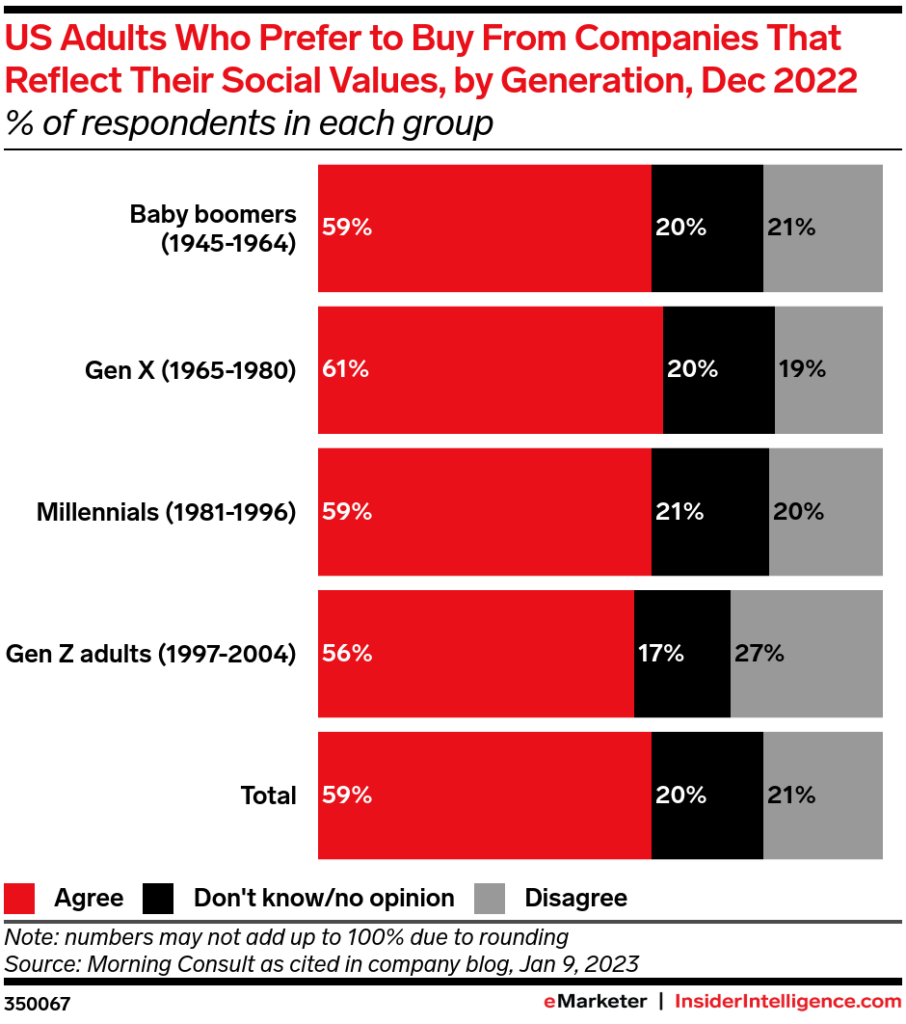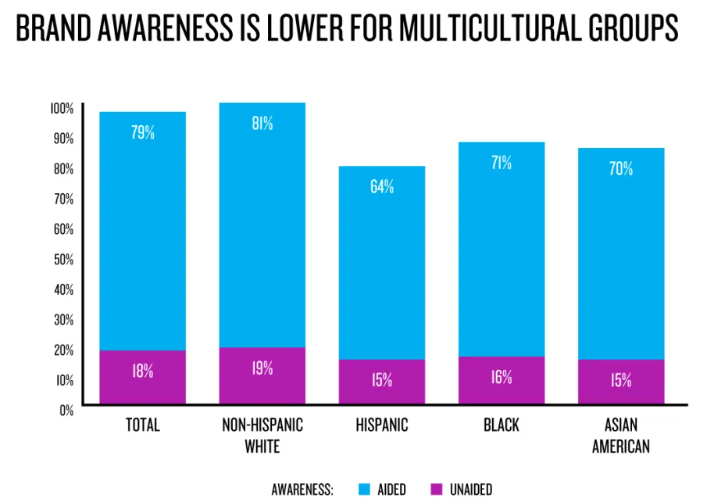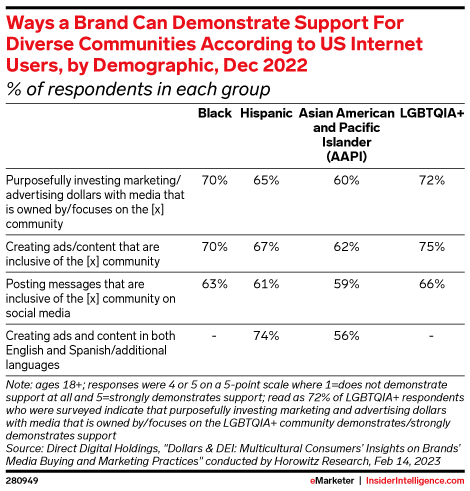Cultural diversity in advertising isn’t just a moral imperative—it’s a strategic advantage that can lead to better brand perception, broader reach, and more innovative campaigns.
According to the Association of National Advertisers’ Alliance for Inclusive and Multicultural Marketing, 64% of consumers stated they are motivated or strongly motivated to support brands that advertise on TV with multicultural and diverse storylines, influencers, and representation.
The world is made up of diversity, so shouldn’t brands be advertising to all consumers? There are a number of reasons why brands fall short of speaking to more people, whether that be a specific narrow demographic they are seeking, or how implicit bias can impact our messages without our awareness.
Regardless of the reason, brands that don’t have multicultural voices in the room or aren’t telling inclusive stories in their advertising are leaving money on the table. Ads that embrace cultural diversity appeal to a wider range of people. By targeting different demographics, brands can expand their market reach and cater to the diverse needs and preferences of their audience.
Here, we discuss how cultural diversity impacts advertising, why it is good business for brands, and what steps your brand can take to create meaningful change.
Why cultural diversity matters in advertising
Cultural diversity in advertising refers to the inclusion and representation of different cultures, ethnicities, languages, and social backgrounds in marketing campaigns. By incorporating diverse perspectives in your advertising, it recognizes the varied experiences, values, and traditions of distinct groups and ensures that these differences are respectfully acknowledged and celebrated.
Whether it be television, podcast, social media, or music, audiences are incredibly diverse, spanning different ethnicities, nationalities, gender identities, and belief systems. Brands that reflect the true makeup of their audiences create a sense of inclusion and belonging, which can lead to stronger brand loyalty and customer retention.
Consumers increasingly expect brands to reflect progressive social values, including diversity and inclusion. Advertising that embraces these ideals helps brands align with consumer expectations.

Brands can also experience a negative impact on their advertising through the negligence of diversity or using it to score points.
Advertisements that ignore diversity can appear out of touch or even offensive, causing negative reactions that hurt a brand’s reputation.
While diverse representation is essential, audiences are quick to recognize when it feels forced or inauthentic. Tokenism—using a single minority character or stereotype to appear inclusive—will most likely backfire.
Advertisers must also be aware of potential cultural sensitivities to avoid alienating or offending any group. Missteps, such as misappropriating cultural symbols or using stereotypes, can cause significant backlash.
But for the brands that invest in authentic, focused efforts, the rewards can be transformative.
Consumers want inclusive marketing—and will reward brands that do
Embracing cultural diversity isn’t just the right thing to do—it’s also smart business. Inclusive marketing strategies can drive a substantial increase in ROI and brand loyalty.
According to the Association of National Advertisers’ Alliance for Inclusive and Multicultural Marketing, 62% of consumers support brands that offer targeted multicultural and diverse focused products, services, or experiences.
Furthermore, a Statista study found that 45% of US and UK consumers are more likely to purchase products from brands that feature diverse ads. This trend isn’t just confined to the U.S. either. As global markets expand, culturally diverse advertising is becoming a necessity for reaching international audiences.
Advertising to multicultural groups presents a significant opportunity. According to Nielsen, brand awareness for auto brands among multicultural groups is estimated to be 10-20% lower compared to the general population.

While that number might not stand out as a large difference, it becomes significantly important when data shows that Hispanic and Black consumers consider more brands throughout the path to purchase.
It’s an important reminder that consumers from all walks of life may be searching for your product, but if your advertising doesn’t resonate with them or reflect their experiences, they might overlook your brand.
The impact of diversity on creative teams
It’s not just about what you see on screen but also who is behind the scenes creating the advertisement. Diverse creative teams are better equipped to craft stories that resonate with varied audiences, bringing unique perspectives and experiences, which can help brands avoid blind spots that lead to insensitive content.
Advertisers are more likely to produce campaigns that genuinely reflect and respect diverse identities when they involve people from different cultural backgrounds in their creative processes. This enhances the brand’s reputation as inclusive, progressive, and socially conscious.
What your brand can do now
Realistically, change takes adaptation, and often a brand-wide buy-in takes time. But there are significant steps brands can take now to initiate that formative change:
- Understand the cultural differences and avoid stereotypes: Often based on outdated or inaccurate assumptions, stereotypes can be harmful and offensive. It is crucial to avoid perpetuating stereotypes that reinforce negative perceptions of different cultures. How do we do that…
- Add authentic representation to the room: Genuinely and authentically representing diverse communities fosters trust and builds brand loyalty. When people see themselves reflected in advertising campaigns, they are more likely to connect with the brand and its message.
- Lean into inclusive storytelling: Telling stories that resonate with diverse audiences can create a sense of belonging and inclusivity. By featuring people from various backgrounds, brands can demonstrate their commitment to diversity and equity.

Cultural diversity in TV advertising is more than just a buzzword; it’s an essential ingredient for modern brands looking to connect with today’s varied audiences. By embracing authentic and sensitive portrayals of diverse groups, brands can build stronger relationships with consumers, enhance their reputation, and drive business success.
As the media landscape expands broader, the brands that prioritize diversity and inclusion will not only thrive but will also help shape a more inclusive and representative future for the advertising industry.
